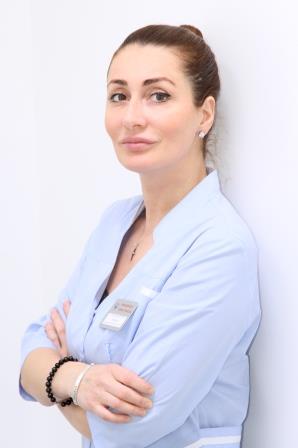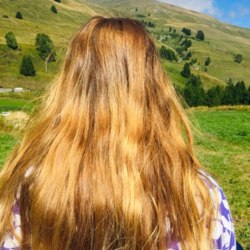Key points
Bioreparation - is an injectable procedure aimed at treating a number of skin imperfections. The essence of the procedure is to inject a product into the skin using micro-injections. Bioreparation helps to smooth out wrinkles, and it can also fight puffiness and under-eye bruising. However, the procedure is not suitable for everyone and is quite expensive.
Pros and cons of the bioreparation procedure
Opinions/feedback from cosmetologists
The composition of the injected cocktails and their effect on the tissue differ. In biorevitalisation, hyaluronic acid is used without the addition of additional ingredients. The aim of the treatment is to restore the hydrophilicity of the tissue (water balance). But the effect is relatively short-lived.
Opinion of authoritative international sources on bioremediation
Q&A
- Comprehensive treatment - not only addresses the problem of ageing, but also a number of aesthetic imperfections.
- Minimal contraindications - dermal infections, autoimmune diseases, herpes, hypersensitivity to components, diabetes mellitus are restrictions on use.
- Scientifically proven - the bioreparation method is based on the latest research in the histological field.
- Prolonged presence of the active ingredients in the dermis - more than 20 days.
- A wide choice of dosage forms.
- A dramatic change with only a few treatments - in just three sessions you can significantly tighten your skin, leaving it firm, radiant and wrinkle-free.
- The results of bioreparation depend largely on the experience and qualifications of the doctor, which is why you should only undergo the procedure at proven clinics.
Contraindications for bioreparation, as with other injectable procedures, are
- tumourous lesions on the dermis;
- diseases of the immune system;
- allergic reaction to ascorbic acid;
- low blood clotting;
- If there is any damage to the skin in the area where the procedure is being carried out;
- pregnancy and the breastfeeding period;
- diabetes mellitus;
- chronic illnesses in an active stage;
- low immunity;
- Individual intolerance to the components of the product.
The bioreparation procedure is relatively safe, but requires consultation with a specialist before it is carried out.
Bioreparation has a number of side effects, which are roughly divided into two groups. The first group is the body's normal reaction to the injections, which can be seen in most patients. These include small bruises and bruises at the injection sites and swelling of the skin.
- Almost all women experience these changes immediately after a bioreparation session, but they are not harmful and pass quickly.
- The second group are quite dangerous complications that are not the norm. These include:
- Allergy to the ingredients in the product. This reaction is rare, but the risk cannot be completely ruled out. If the patient complains of itching and burning, and if the skin at the puncture points turns considerably red, it is necessary to stop the treatment and take antihistamines.
- Infection of the skin in the injection area. This can occur if the specialist does not follow all disinfection and hygiene rules, or if the patient does not take proper care of the skin after the procedure, e.g. by going to the sauna or swimming pool immediately after visiting the beautician. In this case, antibiotic treatment is prescribed.
- Tissue fibrosis and scar formation at skin puncture points. This reaction occurs in people who are prone to the formation of keloids. This is an initial contraindication for bioreparation.
- Compression or blockage of blood vessels at the injection sites. This reaction can occur for several days after the treatment. It is manifested by painful sensations and a significant discolouration of the skin. The consequences of this complication can be tissue death in the area of the procedure, so if these symptoms occur, hyaluronidase is injected into the skin as soon as possible to remove the biopreparation.
The bioreparation procedure is performed for the following facial problems
- pronounced dryness of the skin;
- the need for the dermis to recover from laser treatments;
- The prolapse of the facial tissues;
- hyperpigmentation and reddening of the skin;
- wrinkles, decreased turgor, loss of skin elasticity;
- acne;
- acne and the marks from it;
- shallow scars and scars.
A bioreparation procedure is performed for the following body problems
- signs of age-related changes in the skin of the hands;
- cellulite;
- stretch marks and striae.
Feedback from private users
Despite the negatives in the form of inflammation my skin already felt different after a week - smoother and firmer. In terms of the end result, I see a glow to my skin that I've never seen or noticed before, my skin looks less even without the use of foundation, it's smoother and firmer, and it's smoother to the touch and look. I don't know if anything has kicked in, but from the looks of it, I'm very happy. I would like to repeat the same procedure on my neck to get rid of the rings (which unfortunately I have had since school age).
I think the bioreparation procedure is effective and I think that on better skin (not problematic) the result should be even better without much of a recovery period.
Prices
The cost of the procedure is based on factors such as the age of the patient. The general condition of the skin, the severity of age-related defects, and the type of product that will solve the specific problem.
Preparations
Hyaluronic acid is the basis of the preparations used for facial bioreparation. In addition, biorepair products can also include other components:
- vitamin complex;
- coenzymes;
- beneficial trace elements;
- nucleic acids;
- amino acids used to build cells;
- peptide-rich complex.
Some of these substances not only actively nourish the skin, but are also building materials for it. This triggers the natural mechanisms of cell regeneration and renewal. The body starts to actively produce collagen and elastin, the fibres of which are the skeleton of the skin and are responsible for its elasticity. Even visually, your face will be visibly rejuvenated and refreshed after bioreparation.
Special biorepairing compositions are used. They are selected on the basis of the indications and wishes of the patient as well as availability in the clinic.
- Hyalripire-02 Deeply moisturising, indicated for dehydrated and dry skin, decreased elasticity of the epidermis.
- Hyalripier-04 With hyaluronic acid, cysteine and ascorbic acid, it eliminates couperose, expression lines and pigmentation and strengthens capillary walls.
- Giallripier-08 with L-carnitine stimulates cell regeneration, breaks down fat under the skin and tightens tissue.
- Meso-Wharton P199 with hyaluronic acid, peptides and a vitamin complex helps the skin recover from laser resurfacing and peels. It also has a powerful rejuvenating effect. Particularly effective after the age of 35.
- Aquashine with peptides helps to moisturise and nourish the skin, eliminate pigmentation and fine wrinkles and protect the cells from adverse external influences.
- Teosyal MesoExpert Helps in restoring the skin's structure and saturates it with nutrients.
- Skin R indicated after 45 years of age, stimulates collagen synthesis, regenerates the skin and restores its tone.
- JALUCOMPLEX Helps improve elasticity and strengthens the collagen fibre structure.
- Meso-Xanthin It is indicated for young skin with initial signs of ageing.
Before and after photos
Facial bioreparation reviews by beauty therapists
Men
The procedure is available for both women and men.
How the procedure is carried out
A doctor's consultation is required before using the rejuvenation technique. During the initial examination, the doctor evaluates the condition and needs of the skin, selects the product individually and determines the duration of the treatment. Since the procedure has contraindications, a referral for comprehensive diagnostic examination is made to rule them out or to confirm. If all is well with the patient's health, the specialist will set a date and time for the bioreparation.
All manipulations are carried out in a treatment room with all the necessary equipment. The procedure consists of the following steps:
- Skin cleansing. The patient sits comfortably in the cosmetology chair and relaxes. The beautician cleanses the skin and then treats it with an antiseptic solution. The product destroys the pathogenic microflora, which causes inflammation. Negative effects of bireparation in the form of inflammation and suppuration are therefore minimised.
- Anaesthesia. The injections are administered with a special cosmetic syringe equipped with ultra-thin needles that make micro punctures in the skin. If a person has a low pain threshold, they will only feel slight discomfort in the form of a tingling sensation at the site where the biopreparation is injected. If the patient wishes to avoid discomfort, the doctor will treat the face with an anaesthetic.
- Injection of a bioreparant. After the anaesthetic has taken effect, the beautician injects the product. The injections are mainly used in the papular method, with a distance of 1 cm for the face and 2 cm for the décolleté area. The distance can vary depending on the overall condition of the skin.
- Application of a soothing and revitalising gel. Micro punctures remain on the skin after the injections. These areas may be red and slightly itchy. To alleviate discomfort and speed up regeneration of the damaged tissue, the beautician applies a soothing and wound-healing gel to the face.
- The procedure lasts 25 to 30 minutes. To maximise the effect of bioreparation, it is advisable to undergo a course of 3 sessions. As a preventive measure against age-related changes, beauticians recommend a maintenance treatment once every 2 months.
In the first few days after the injection, these phenomena may occur:
- small papules at the injection site;
- swelling, hyperemia;
- bruises, bruises;
- slight discomfort, soreness.
These symptoms are normal and will disappear on their own without special treatment. In order to consolidate the results and prolong the effect of the treatment, it is advisable in the first 2 to 3 days after the treatment to adhere to such rules:
- Protect your face from direct exposure to UV rays. Apply sunscreen to treated areas before going outdoors and wear a wide-brimmed hat.
- Apply cold compresses to the face throughout the day to soothe inflammation and prevent the bruises from spreading.
- Avoid drinking alcohol. Alcohol dilates blood vessels and there is an increased risk of severe swelling at the injection sites after drinking it.
- Refrain from physical activity, which increases blood circulation and thus nullifies the effect of the therapy.
- Avoid going to the swimming pool, solarium, sauna and baths.
- After bioreparation, facial massage, peeling and other aggressive procedures that damage the integrity of the skin are prohibited for 2 to 3 months.
If you follow the doctor's recommendations and follow simple rules during the rehabilitation period, the biorepairing effect will manifest itself externally as follows:
- Improves skin tone, firmness and elasticity;
- The disappearance of wrinkles, age spots, scars, scars and stretch marks;
- micro-relief levelling;
- the formation of a clear, pronounced facial oval;
- hydration and rejuvenation.
The fundamental difference between biorevitalisers and bioreparantines is that the former contain only hyaluronic acid, while the latter have a complex composition to address more serious skin problems.
In particular, the preparations used in bioreparation include:
- ascorbic acid;
- amino acids;
- peptides.
Together, these substances have a stimulating effect on the synthesis of collagen and elastin and are retained in the tissue for a long time. While hyaluronic acid stays in the skin for no more than 72 hours, bioreparants remain in the dermis for up to three weeks after injection. Thanks to this property, they create a supply of essential nutrients and stimulate the formation of new collagen fibres.
It is worth noting that the uniqueness of Hyaluripair lies in its solid-phase modification, which allows hyaluronic acid to be successfully combined with additional active ingredients. This ability leads to the fact that hyaluronidase - enzymes that have the ability to break down hyaluronic acid - do not act on the molecules of the product. As a consequence, bioreparation requires fewer treatments than biorevitalisation.
Facial bioreparation has a number of significant differences from similar ones rejuvenation treatments:
- solves several problems with the epidermis at once;
- the procedure is safe and minimally invasive;
- the preparations used are resorbed within 3 weeks, allowing all skin layers to be renewed and the previous collagen production to be restored;
- The composition of the injections is selected individually according to the patient's problems;
- the proven effectiveness of the treatment for age-related problems;
Bioreparation is a procedure to repair skin cell structures damaged by oxidative stress caused by endogenous causes or exposure to aggressive environmental factors. This method is essentially the next evolutionary step after biorevitalisation, providing cosmetologists with a more effective tool.
Skin bioreparation involves the intradermal microinjection of certain preparations containing proteins, amino acids and vitamins in addition to hyaluronic acid. This multi-component approach creates a stock of substances necessary for the skin in the area to be treated. Another aspect of the method is the prolonged (more than 14 days) presence of the ingredients in the dermis, which triggers the natural regeneration mechanisms, which continue to work effectively after the injected substance is depleted.
Conclusion
Bioreparation is an injectable treatment. It involves injecting a hyaluronic acid-based product under the skin. With the help of the manipulation, problems associated with age-related changes in the skin can be solved, and a radiant appearance is restored to the face. The method rarely causes adverse reactions and does not require a long recovery time.














































